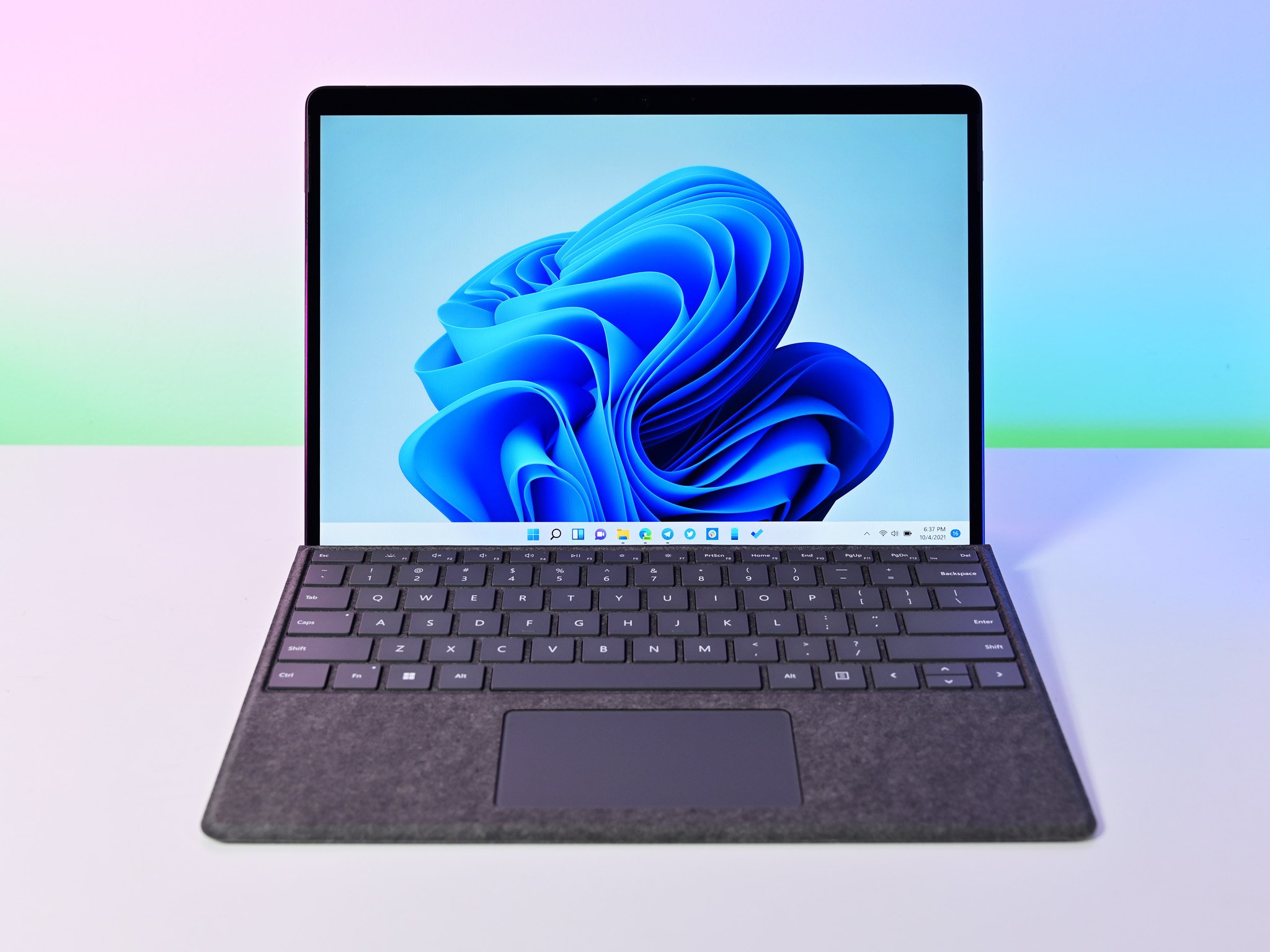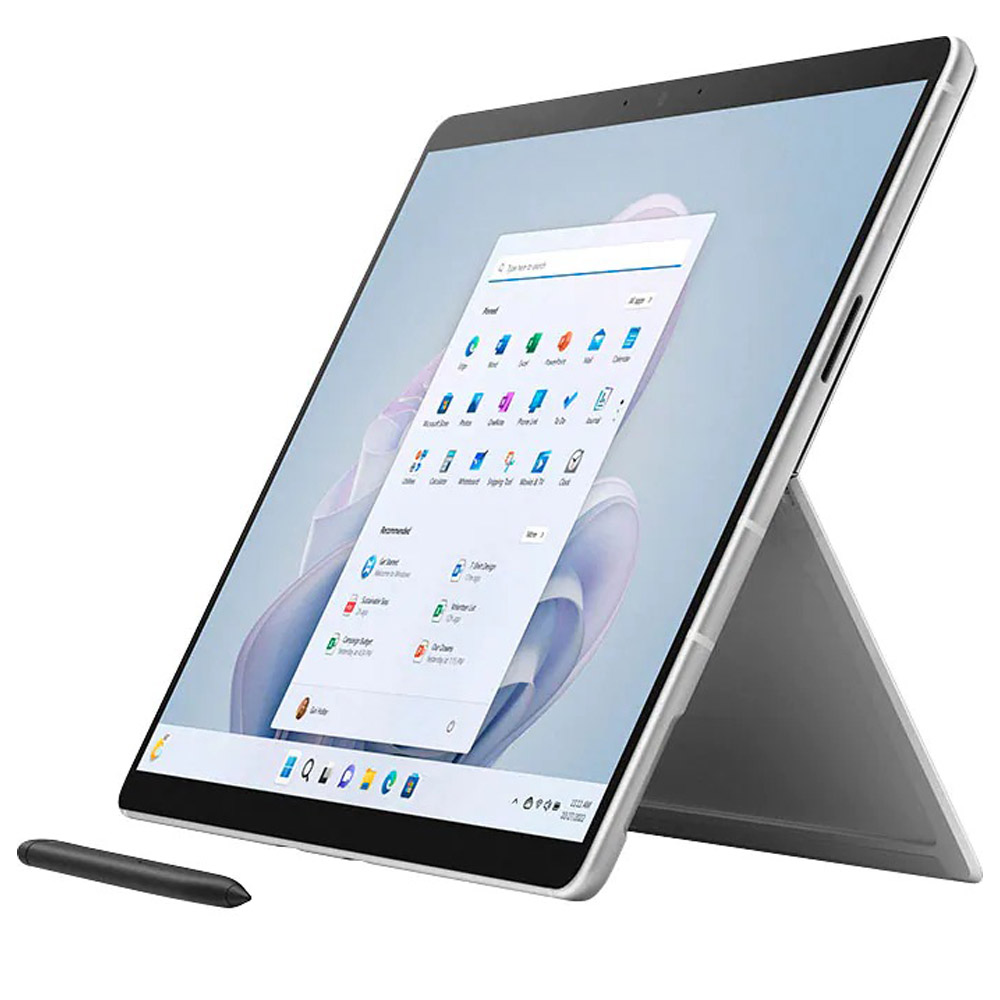
Microsoft's new Surface Pro 9 has taken the best of the Pro 8 and Pro X to become the most versatile flagship 2-in-1. The design and display are essentially the same as the Pro 8, but it's now available in designated standard and 5G versions with either a Microsoft's SQ3 chip or 12th Gen Intel CPU.
Pros
- Dedicated Wi-Fi and 5G models
- Faster processors, Intel Evo certification
- LPDDR5 RAM (non-5G version)
- New Sapphire and Forest colors
- Same beautiful design
Cons
- Battery rating takes a dip (non-5G version)
- Will cost more than Pro 8 at launch
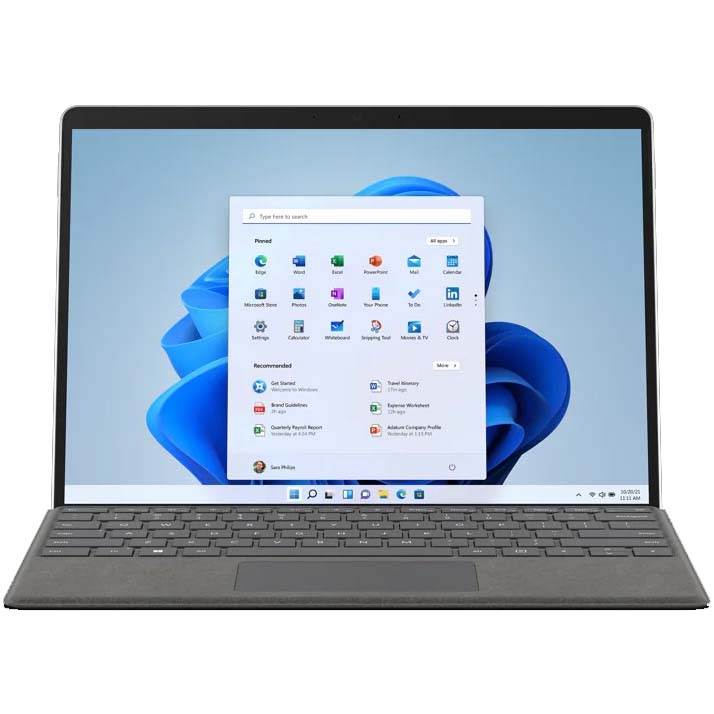
Microsoft's Surface Pro 8 has been usurped by the Pro 9, but it's still a quality 2-in-1 PC that brings strong performance, gorgeous display, solid battery life, and a ton of versatility. Keep an eye out for discounted prices as stock is finished off.
Pros
- Beautiful touch display
- Speedy in its own right
- Same overall design
- Optional LTE available
- Models will be discounted
Cons
- Not as much performance from older CPUs
- LTE only available on business side
- Fewer color options
Microsoft's new Surface Pro 9 was just announced as the next-gen 2-in-1 flagship model. Going forward, the Pro 8 and Pro X models have been combined to offer different CPUs and wireless capabilities under the same Pro 9 umbrella. Users will be able to choose from 12th Gen Intel and Microsoft SQ3 processors, Wi-Fi 6E or 5G connectivity, and different storage options while still getting the same display and overall design.
The Surface Pro 8 is still around as one of the best Microsoft Surface PCs as we await the Pro 9's release. Despite it no longer being the latest and greatest Pro model, it can still deliver a high-end PC experience for those who need something right now (or for a lower price).
Microsoft's splits its PCs into "Consumer" and "Commercial" categories. While anyone can buy from either side of the store, in the past this made things a bit more confusing, especially if you were trying to find LTE models. That's changed a bit for this generation, with Microsoft offering both Pro 9 and Pro 9 with 5G models on the consumer side.
Let's take a look first at how the consumer versions of the Surface Pro 9 and Pro 8 compare.
| Header Cell - Column 0 | Surface Pro 9 | Surface Pro 9 with 5G | Surface Pro 8 |
|---|---|---|---|
| OS | Windows 11 Home | Windows 11 Home | Windows 11 Home |
| Processor | 12th Gen Intel, Intel Evo | Microsoft SQ3 | 11th Gen Intel, Intel Evo |
| Row 2 - Cell 0 | Core i5-1235U, Core i7-1255U | Row 2 - Cell 2 | Core i5-1135G7, Core i7-1185G7 |
| RAM | 8GB, 16GB, 32GB LPDDR5 | 8GB, 16GB LPDDR4x | 8GB, 16GB, 32GB LPDDR4x |
| Graphics | Intel Iris Xe | Microsoft SQ3 Adreno 8CX (Gen 3) | Intel Iris Xe |
| Storage | 128GB, 256GB, 512GB, 1TB | 128GB, 256GB, 512GB | 128GB, 256GB (Removable SSD) |
| Row 6 - Cell 0 | Removable SSD | Removable SSD | 512GB, 1TB (SSD) |
| Display | 13 inches, 2880x1920 (267 PPI), touch, 3:2 aspect ratio | 13 inches, 2880x1920 (267 PPI), touch, 3:2 aspect ratio | 13 inches, 2880x1920 (267 PPI), touch, 3:2 aspect ratio |
| Row 8 - Cell 0 | Up to 120Hz (dynamic refresh rate), Dolby Vision | Up to 120Hz (dynamic refresh rate) | Up to 120Hz (dynamic refresh rate), Dolby Vision |
| Pen | Surface Slim Pen 2 (Sold separately) | Surface Slim Pen 2 (Sold separately) | Surface Slim Pen 2 |
| Ports | Two Thunderbolt 4, Surface Connect | Two USB-C 3.2, NanoSIM, Surface Connect | Two Thunderbolt 4, 3.5mm audio, Surface Connect |
| Audio | Dual 2W speakers, Dolby Atmos, dual far-field mics, Voice Clarity | Dual 2W speakers, Voice Clarity, Windows Studio Effects, dual far-field mics | Dual 2W speakers, Dolby Atmos, dual far-field mics |
| Wireless | Wi-Fi 6E, Bluetooth 5.1 | Wi-Fi 6E, Bluetooth 5.1, NanoSIM, eSIM, 5G, mmWave, Sub-6 | Wi-Fi 6, Bluetooth 5.1 |
| Camera | Front-facing 1080p, IR camera, rear-facing 10MP (4K video) | Front-facing 1080p (Windows Studio Effects), IR camera, rear-facing 10MP (4K video) | Front-facing 5MP (1080p), rear-facing 10MP (4K video) |
| Security | TPM 2.0, Windows Hello IR camera, Windows 11 Secured-core PC | Microsoft Pluton, Windows Hello IR camera, Windows 11 Secured-core PC | TPM 2.0, Windows Hello IR camera |
| Battery | Up to 15.5 hours | Up to 19 hours | Up to 16 hours |
| Dimensions | 11.3 x 8.2 x 0.37 inches | 11.3 x 8.2 x 0.37 inches | 11.3 x 8.2 x 0.37 inhces |
| Row 17 - Cell 0 | (287mm x 208.3mm x 9.4mm) | (287mm x 208.3mm x 9.4mm) | (287mm x 208.3mm x 9.4mm) |
| Weight | 1.94 pounds (879g) | mmWave: 1.95 pounds (883g) | 1.96 pounds (891g) |
| Row 19 - Cell 0 | Row 19 - Cell 1 | Sub-6: 1.94 pounds (878g) | Row 19 - Cell 3 |
| Color | Platinum, Graphite, Sapphire, Forest | Platinum | Platinum, Graphite |
We can now check out how the commercial versions of the 2-in-1 PCs compare. The PCs are very similar, so I only noted specs where there was a difference between consumer and commercial versions.
The 12th Gen Intel Core CPUs in the Pro 9 have the full vPro Enterprise designation, whereas they hit only the Essentials tier in the consumer version. On the Pro 8 side, the commercial versions are where you can find 5G connectivity and an optional Core i3-1115G4 (as well as Core i5 and Core i7) vPro processor.
| Header Cell - Column 0 | Surface Pro 9 for Business | Surface Pro 9 with 5G for Business | Surface Pro 8 |
|---|---|---|---|
| OS | Windows 10 Pro, Windows 11 Pro | Windows 11 Pro | Windows 1 Pro, Windows 11 Pro |
| Processor | 12th Gen Intel, Intel Evo | Microsoft SQ3 | 11th Gen Intel, Intel Evo |
| Row 2 - Cell 0 | Core i5-1245U, Core i7-1265U | Row 2 - Cell 2 | Core i3-1115G4, Core i5-1145G7, Core i7-1185G7 |
| Graphics | Intel Iris Xe | Microsoft SQ3 Adreno 8CX (Gen 3) | Intel UHD (i3), Iris Xe (i5, i7) |
| Wireless | Wi-Fi 6E, Bluetooth 5.1 | Wi-Fi 6E, Bluetooth 5.1, NanoSIM, eSIM, 5G, mmWave, Sub-6 | Qualcomm Snapdragon X20 LTE, SIM, eSIM |
The Pro 9 should start shipping on October 25; pre-orders are open now. The Intel model should start at about $999 while the ARM model should start at about $1,299. The Surface Pro 8 is readily available now.
All the latest news, reviews, and guides for Windows and Xbox diehards.
Design and features
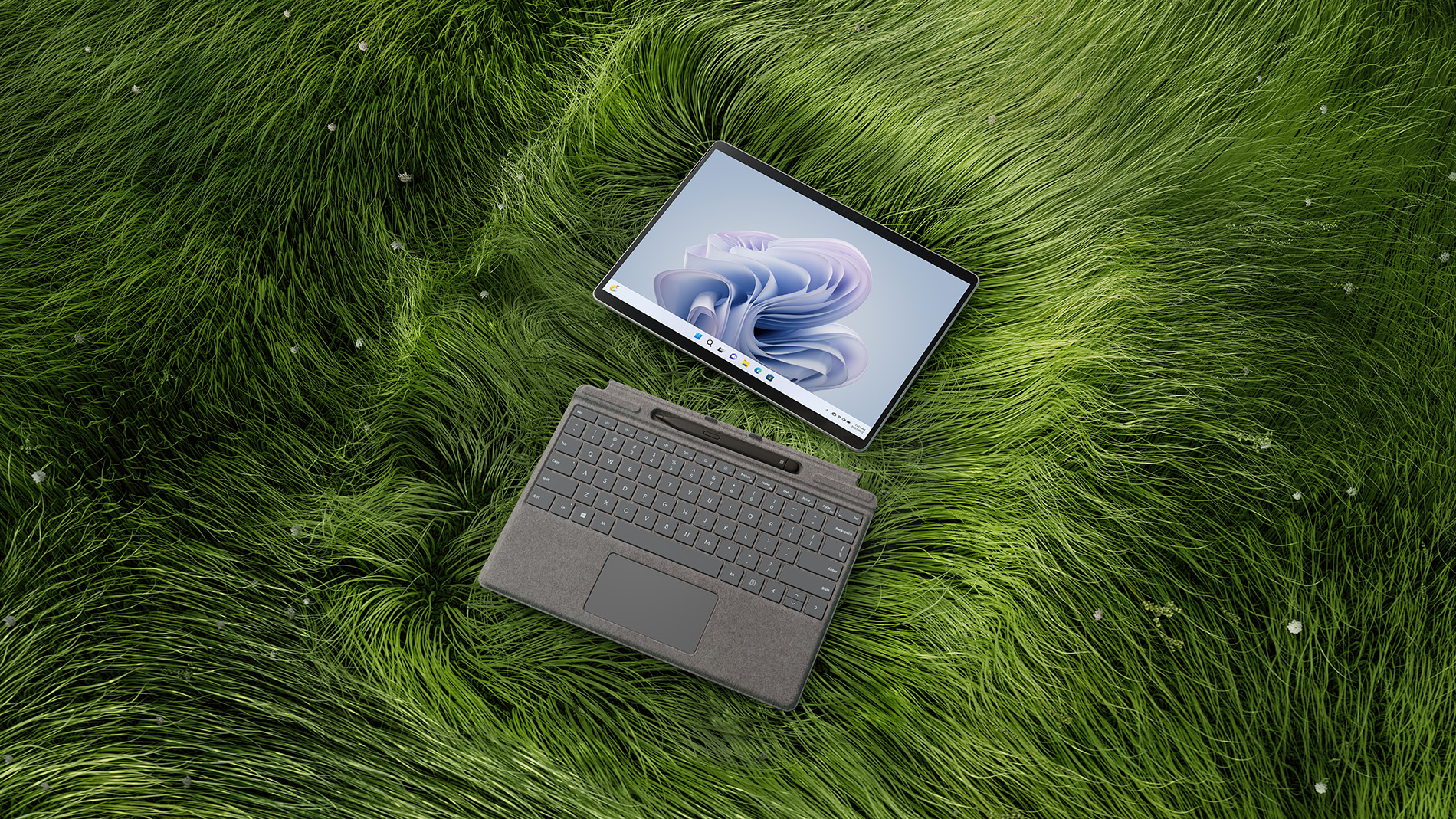
Not a whole lot has changed physically between the Pro 8 and new Pro 9. The dimensions are essentially the same, with both models measuring just 0.37 inches (9.4mm) thin. Weight is also similar, with just a few grams difference here and there depending on whether or not you opt for 5G. All Pro PCs are built into an anodized aluminum body.
Models still have a built-in stand on the back, capable of folding out 165 degrees. This allows you to use the tablet at different angles, especially important when inking or typing with an attachable keyboard and touchpad. The Pro 8 and Pro 9 come in Platinum and Graphite colors; the Pro 9 also has new Sapphire and Forest options. The Pro 9 with 5G is only available in a Graphite color.
The Pro 9's 3.5mm audio jack (still available on the Pro 8) has gone extinct. It retains dual Thunderbolt 4 and a proprietary Surface Connect port. The Pro 9 with 5G, due to its ARM-based setup, has two USB-C 3.2, a NanoSIM slot, and a Surface Connect port. You'll likely want to check out the best Thunderbolt 4 docks if you opt for a Pro 8 or Pro 9, or the best general laptops docks for those with the Pro 9 5G model.
Bluetooth 5.1 is available in all models, while the Pro 9 with 5G adds mmWave and Sub-6 5G capabilities. The Pro 9 models have Wi-Fi 6E, while the Pro 8 is stuck on Wi-Fi 6. The Pro 8 is available with LTE connectivity thanks to a Qualcomm Snapdragon X20 modem, but only if you buy from the business side of Microsoft's store.
The Pro 9 and Pro 8 include dual 2W speakers with Dolby Atmos, as well as dual far-field microphones for calls. The Pro 9 with 5G, thanks to its neural processing unit (NPU), also includes Windows Studio Effects with add-ons like auto framing, background blur, eye contact, and voice focus. This ties in with its front-facing 5MP (1080p) camera and rear-facing 10MP camera with 4K video capabilities. The Pro 8 has the same level of hardware, but it lacks the Studio Effects that come with the Pro 9 with 5G's NPU.
As for security, all Pro models have a TPM 2.0 chip and IR camera for Windows Hello. The Pro 9 and Pro 9 with 5G are Secured-core PCs, plus the Pro 9 with 5G model adds Microsoft Pluton.
And finally, new Signature Keyboards come in the Sapphire and Forest colors. They're sold separately, which at least means you can mix and match colors. They're now made with an updated Alcantara fabric that includes at a minimum 12% renewable material.
Display
The Pro 9's touch display really hasn't changed compared to the Pro 8. It's still sized at 13 inches, it has a 2880x1920 resolution with 267 pixels per inch (PPI), and it has a tall 3:2 aspect ratio that's ideal for a tablet. The dynamic refresh rate allows for up to a smooth 120Hz, which makes inking that much better.
Dolby Vision is included with the Pro 9 and Pro 8, but it doesn't look like it's an option for the Pro 9 with 5G model. Bezel is fairly slim around all four sides. The Pro 8 and Pro 9 are meant to work best with the Surface Slim Pen 2, though this accessory isn't generally included and is sold separately. The pen supports some haptic force feedback for a more natural feel, but only in some apps.
In his Surface Pro 8 review, Executive Editor Daniel Rubino noted that "when you combine 120Hz, Dolby Vision HDR, adaptive color, and excellent color accuracy in a larger 13-inch screen, you get the best Surface Pro display experience ever. It's terrific."
Color reproduction as measured in the Pro 8 hits 100% sRGB, 81% AdobeRGB, and 83% DCI-P3, all excellent results. It also hit 441 nits brightness at peak and 1.9 nits at minimum. These numbers should be the same or similar for the Pro 9.
Performance
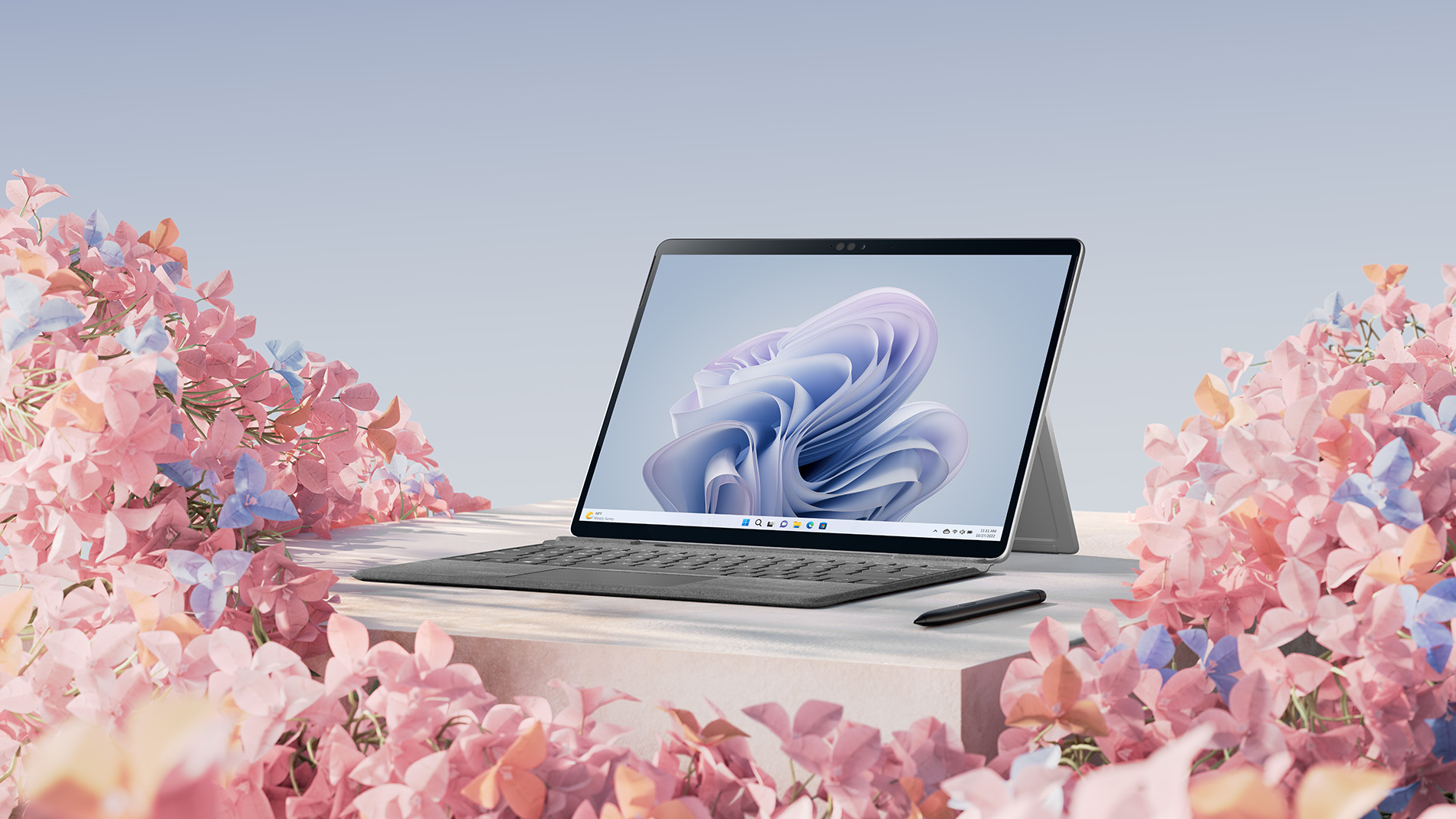
The Surface Pro 9 has been outfitted with Intel's 12th Gen U-series mobile CPUs. You can choose a Core i5-1235U or a Core i7-1255U, as well as up to 32GB of LPDDR5 RAM and a 1TB SSD that can be upgraded. Microsoft claims the new CPUs can deliver up to 50% better performance compared to the 11th Gen chips in the Pro 8.
The Pro 9 with 5G continues the Pro X's legacy, offering a refreshed Microsoft SQ3 ARM-based processor. It can be accompanied by up to 16GB of LPDDR4x RAM and up to a 512GB removable SSD.
The Pro 9 and Pro 8 are Intel Evo certified, meaning they remain speedy on battery power while also offering speedy wake from sleep and solid battery life. The Pro 9 with 5G doesn't receive the same designation due to its different processor, but it does include the NPU that helps with Windows Studio effects.
Microsoft claims that the Intel-based Pro 9 can hit up to 15.5 hours of battery life from a charge. The Pro 9 with 5G, thanks to its ARM-based platform, extends that estimate up to 19 hours. These numbers must be taken with a grain of salt, as the Pro 8 is quoted at up to 16 hours; in our tests, it hit closer to about 11 hours with the display's refresh rate set at 60Hz.
There are vPro versions of the CPUs available for the Pro 8 and Pro 9, while the Pro 9 with 5G sticks with the SQ3 processor across models. If you opt for the Surface Pro 8 for Business, you unlock an extra Core i3-1115G4 CPU with Intel UHD graphics. Otherwise, Intel chips have the more powerful Intel Iris Xe integrated graphics. The SQ3 chip offers Adreno 8CX (Gen 3) integrated graphics.
We will have more to share on specific performance differences once we begin reviewing the new Microsoft PCs.

The Surface Pro 8 is no longer the newest 2-in-1 on Microsoft's roster, but it's still a fine PC that will likely get more affordable as it's replaced by the Pro 9.

Cale Hunt brings to Windows Central more than nine years of experience writing about laptops, PCs, accessories, games, and beyond. If it runs Windows or in some way complements the hardware, there’s a good chance he knows about it, has written about it, or is already busy testing it.
